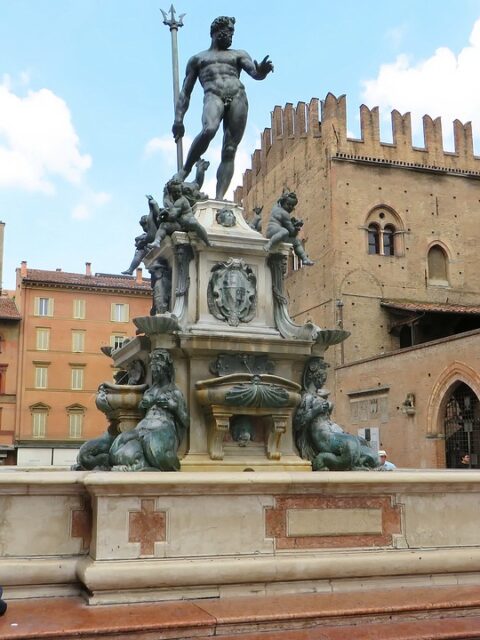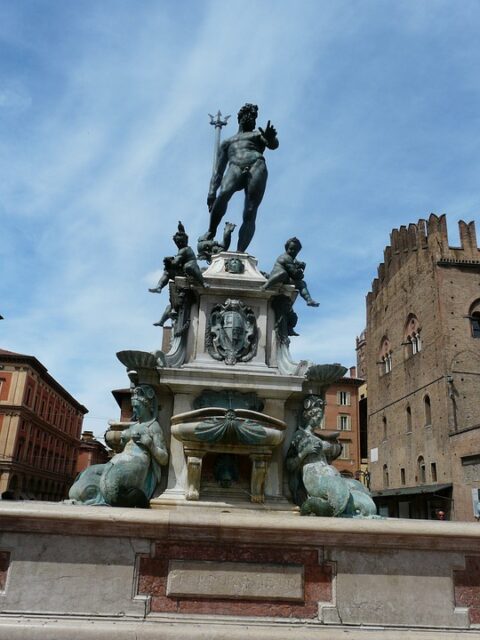Fontana di Nettuno
Right on the north side of Piazza Maggiore, we can find the famous fountain of Bologna, the Fontana di Nettuno. The bronze statue of Neptune is the work of Jean de Boulogne (Gianbologna), built in the years 1563/1564 and gave its name to this square.
The construction of the fountain took place after the demolition of a block that was between the Palazzo Re Enzo and the Palazzo del Comune, approximately from the point currently occupied by the fountain to the axis via Ugo Bassi – via Rizzoli. Two streets disappeared, on the eastern and western sides of the block. (via della Zecca and via delle Scudelle).
The location used to be the place of the Bolognese prisons and the place where the Mint used to be. Members of the nobility and important state figures had their homes around the square which became a fair of agricultural products and a market of linen and hemp on Saturday. Zanti described the fountain of Neptune as being in Piazza Reale, which was the name of a part of Piazza Maggiore. Piazza Nova was the namesake used in the 17th century referring to the recent creation of the square.
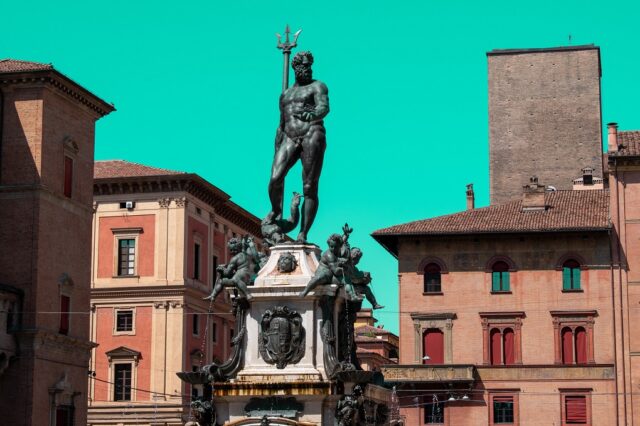
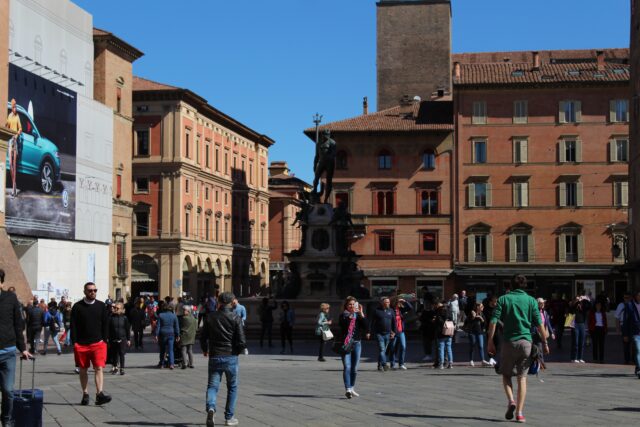
The impressive fountain was built by the will of Pope Pius IV (Giovanni Angelo Medici) in the aftermath of the Council of Trent, the fountain of Neptune is a Renaissance work that is part of the largest architectural renovation program in the center of Bologna, and in particular in Piazza Maggiore promoted by the Pontifical Deputies of the era.
In this urban reorganization of vast proportions, the portico dei Banchi was created based on a design by Vignola (1565), as well as the new headquarters of the Archiginnasio (1563) and the square in front of the Scuole square (today Piazza Galvani), while a complex program also took shape. supply of running water using a new aqueduct coming from the hilly area near the convent of San Michele in Bosco, which would have fed a system of public fountains to be placed near the Apostolic palace (Town Hall).
The result of a collaborative project between an architect, Tommaso Laureti, and a sculptor, Giambologna (Jean de Boulogne), this fountain was imagined from the beginning as a spectacular symbol of munificence and good papal government, so much so that its original name of Aqua Pia (in honor of Pius IV), fully reflects its intention. It was conceived in the name of symmetry and the vertical impetus of the whole, with the different groups of figures (dolphins, sirens, heraldic coats of arms, cherubs) arranged around the serpentine figure of Neptune placed at the crown of the monumental structure.
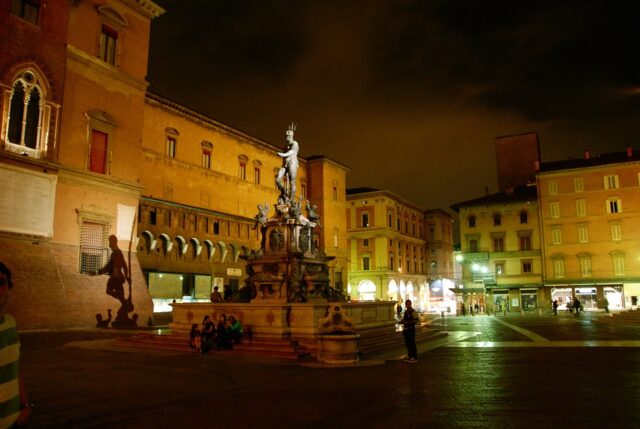
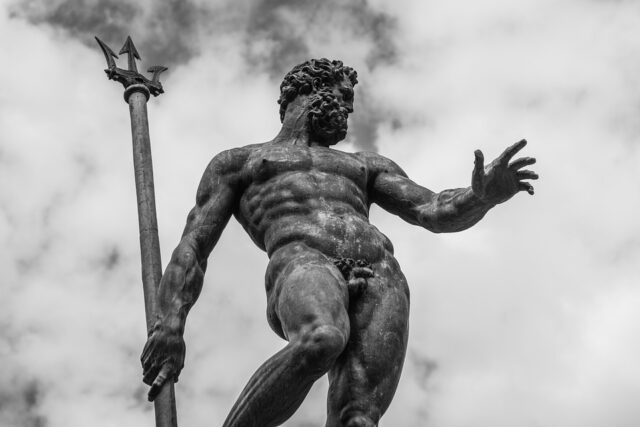
The four inscriptions placed on the sides of the large Verona marble basin:
Aere Publico (made with public money);
Populi Commodus (for the use of the people);
MDLXIIII (1564),
they would have effectively illustrated the financial program, the purpose, and the role of the clients, whose names are also reported in Latin capital letters:
Pius IIII Pont. Max (Pius IV Pontiff Maximus);
Petrus Donatus Caesius Gubernator (Pier Donato Cesi, Cardinal Vice Legate);
Carolus Borromaeus Cardinalis (Carlo Borromeo, Cardinal Legate);
SPQB (Senatus Populusque Bonononiensis, or the Regiment of Bologna).
The spring water had to gush copiously from the 38 nozzles that came out of as many bronze figures, making the monument “alive” and increasing its magnificence as a result of technology. Cesi (Papal sought the isolation of the fountain and the idea of surrounding it with a protective iron balustrade (removed in 1888) accentuated its character of pure visual and symbolic experience.
The precious spring water could only be accessed from a second large public wall fountain located in the nearby piazza del Mercato de’Pollaroli. This second fountain, now known as the Old Fountain and recently restored, was also designed by Laureti and placed along the northern facade of the Palazzo Comunale (today along Via Ugo Bassi).
